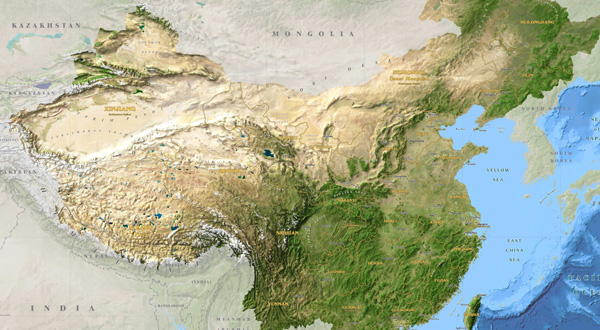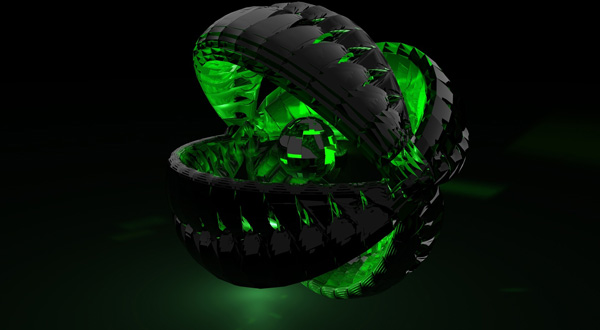Now - 06:04:38
Soviet rocket Energia super-heavy class
“Energy” – the Soviet super-heavy booster. She was one of the three most powerful ever built missiles of the same class – “Saturn V”, as well as the ill-fated N-1 rocket farms, which she had to replace. Another main purpose of the rocket was the launch into orbit of the Soviet spacecraft reusable, that distinguished it from the American who flew with the help of their own engines, fueled by a large external fuel tank. Although in 1987-1988 “Energy” has twice been in space, after that the launches were no longer carried out, despite the fact that in the Soviet Union, she had become the primary means of delivering cargo to orbit twenty-first century.
Lunar bridgehead
After Valentin Glushko headed the TsKBEM (former OKB-1), replacing the disgraced Vasily Mishin, he spent 20 months working on the establishment of a lunar base based on modification of missiles «proton" design of Vladimir Chelomei, which used hypergolic engines Glushko.
By the beginning of 1976, however, the Soviet leadership decided to stop the lunar program and focus on the Soviet space Shuttle, American Shuttle was seen as a military threat from the United States. Although ultimately “storm” is very similar to the rival, Glushko made one significant change that has allowed him to maintain his lunar program.

Soviet Shuttle
In the American Shuttle "space Shuttle" and two solid rocket boosters two minutes accelerates the ship to a height of 46 km. After their separation, the ship used engines located in the aft. In other words, the Shuttle, at least partly, had their own rocket launcher, and a large external fuel tank to which it was attached, the rocket was not. It was only intended for the transportation of fuel for the main engines of the spacecraft reusable.
Recommended
"Knowledge is light and ignorance is darkness": the value, meaning and alternatives
There are some sayings that would seem to need no explanation, such as “teaching & ndash; light and ignorance – darkness”. But some still do not understand their meaning. But not only for such people is written by our article. I...
What was invented by Mendeleev for the army. The history and fate of the invention
D. I. Mendeleev was a brilliant Russian scientist-polymath, who made many important discoveries in various fields of science and technology. Many people know that he is the author of “Fundamentals of chemistry" and the periodic law of chem...
The origin of the Slavs. The influence of different cultures
Slavs (under this name), according to some researchers, appeared in the story only in 6 century ad. However, the language of nationality bears the archaic features of the Indo-European community. This, in turn, suggests that the origin of the Slavs h...
Glushko decided to build a “storm” even without any engines. It was a glider designed to return to Earth, which is in orbit engines, externally resembled the fuel tank of the Shuttle. Actually it was a booster «Energy». In other words, the chief designer of the Soviet Union, hid in the system of space ship reusable booster module class "Saturn V”, which could potentially become the basis for his beloved lunar base.

Third generation
What is the booster “Energy”? Its development began when Glushko headed the CDBMB (actually the name of “Energy” was used in the name of the newly reorganized Department of NGOs long before the creation of the rocket) and brought with it a new design of rocket aircraft (RLA). In the early 1970s the Soviet Union had at least three rockets – the modification of N-1-R-7, “Cyclone” and “proton". They are all structurally different from each other, so their cost of service was relatively high. For the third generation of Soviet spacecraft needed to create light, medium, heavy and super heavy launch vehicles, consisting of one common set of components, and of RLA Glushko was perfect for this role.
A Series of RLA lost «Zenith» OKB design Bureau, but this Bureau of heavy launch vehicles was missing, which gave the opportunity to the promotion of “Energy”. Glushko took his design of RLA-135, which consisted of a large primary booster module and detachable boosters, and again offered it with a modular version «Zenith» in the accelerators and the major new missile developed by his office. The offer was accepted, and so was born the rocket «Energy».

Korolev was right
But Glushko had to take another blow to his ego. For many years the Soviet space program was hampered for the reason that he didn't agree with Sergei Korolev, who believed that for a large rocket with liquid oxygen and hydrogen were the best fuels. Therefore, in the N-1 engines are built much less experienced designer Nikolay Kuznetsov, and Glushko focused on nitric acid and dimethylhydrazine.
Although this fuel and had such advantages as the density and the suitability for storage, but it was less energy intensive and more toxic, which was a big problem in case of an accident. In addition, the Soviet leadership was keen to catch up with the United States – the Soviet Union had large engines on liquid oxygen and hydrogen, while in the second and third steps "Saturn V” they were used as main engine "space Shuttle". Partly voluntarily, partly due to this political pressure, but Glushko had to give way in its dispute with the Queen, who for eight years was not alive.

10 years of development
Over the next ten years (this is long, but not too much: on the development of "Saturn V” took seven years) NGOs «Energy» developed massive main stage.The side boosters were relatively lighter, smaller and used the engines on liquid oxygen and kerosene, in whose creation the USSR had a lot of experience, so the whole rocket was ready for first flight in October 1986.
Unfortunately, she was the payload. Although the development of “Energy”, and there were some problems, the situation with the Shuttle "Buran" much worse – it was not even close to completion. Up to this point, the name “Energy” used for rocket and space plane. Here's handy trick Glushko. The rocket didn't have to wait until the other half is ready. In the last year of its inception, it was decided to make a start without “storm”.

“pole" arms race
Between autumn 1985 and autumn 1986 created a new payload "pole". It was one of the functional cargo blocks, Vladimir Chelomei, converted from a module of the space station and is closely associated with the ISS module «dawn». “pole" was intended for a wide range of experiments but its main task was to test a 1-MW carbon dioxide laser-weapons developed in the USSR since 1983. In fact, everything was not as sinister as it seems, as the Soviet Union criticized the United States for strategic defense initiative, and Mikhail Gorbachev did not want to jeopardize what Americans can learn about military confrontation. The summit at Reykjavik ended in October 1986 and the country was close to a drastic reduction of nuclear weapons, and in December 1987 they were going to conclude an agreement on reducing medium-range missiles. The various components of the laser intentionally not used, leaving only the ability to track targets, and even that Gorbachev forbade to experience visiting Baikonur, a few days before the start. However, Gorbachev's visit resulted in the formal name of the missile (unlike the alleged hook): the inscription “Energy” appeared on her body shortly before the arrival of the General Secretary.
Error
The First launch of the carrier rocket «Energy» was held on 15 may 1987 for the first few seconds of flight before the ship left the launch pad, it is noticeably bent, but then he adjusted his position after system start-up control the orientation of the rocket. After this «Energy» flew beautifully, accompanied by one Moment and quickly disappeared in the low clouds. Boosters separated correctly (although this and the next flight they were not equipped with parachutes, which would allow their reuse), and then the main stage left the zone of visibility. After burnout, the booster is separated from “Poles” and, as planned, fell into the Pacific ocean.
The‘pole’ weighed 80 tonnes, and to reach orbit, it had to launch its own rocket engine. For this it was necessary to make turn on 180 degrees, but because of program error after start-up the module continued to rotate, and instead move to a higher orbit, he fell below. The cargo module also crashed in the Pacific ocean.

Success?
And Although the launch failed, the missile itself was a complete success. Work on “Storm” continued and largely completed the Shuttle (ready to fly, but able to generate power sufficient only for one day in orbit) were connected with a second rocket to launch an unmanned mission 15 November 1988. And again, booster “Energy” has been running flawlessly (with a change in the software prevents dangerous tilting during the launch), and this time its payload is also not disappoint: “storm” in automatic mode, landed at Baikonur, having made two turns around the Earth, three hours and twenty five minutes later.
Thus, by early 1989 the Soviet Union had the most powerful rocket so far no one has surpassed. She could launch a Shuttle with a payload similar to the load of the American orbiters, and in itself could lead to low-earth orbit 88 tons of cargo, or to deliver 32 tons to the moon (compared to 118 tonnes and 45 tonnes at the "Saturn V” and was 92.7 t and 23.5 t u N-1). It was planned to further increase this figure to 100 tons, and were working on creating a special cargo compartment is adapted “Poles”. A smaller version of the rocket named “Energy-M" with one engine and two boosters was also in the final stages of development and was capable of a payload weighing up to 34 tons.
Expensive
The Collapse of the Soviet Union was the main reason for the failure of the project. Just he started to get to his feet, but the need to protect the security interests of the superpowers has disappeared, and the money needed for large-scale scientific missions. The other problem was that the boosters «Zenith» was made company located in independent Ukraine.
However, even before the booster “Energy” was not enough demand – if there is no need to fly to the moon, rise into orbit 100 tons of the cargo was excessive. The shuttles, for which it was developed in the first place, were the same disadvantages as the us space Shuttle, but the rocket was not the benefitsmonopoly position, as it was in the United States before the explosion of the “Challenger” in 1986.
A Cry of despair
The despair of the NGO «Energy» can be seen in proposed missions:
- Orbit insertion massive lasers with the aim of restoring the ozone layer for several decades.
- Build a base on the moon for mining helium-3 used in fusion reactors, developed by the international consortium, which will be ready by 2050.
- The Start-up of spent nuclear fuel "burial" in a heliocentric orbit.
In the end it came to the question of what I was capable of rocket, which could make smaller, cheaper spacecraft – each start “Energy” has cost $ 240 million, even with an overvalued ruble against the dollar in the late 80s. If launches were made only when necessary, the contents of a plant for the manufacture of rockets would be a luxury that neither the Soviet Union nor Russia can afford could not.
Pyrrhic victory
If you agree with the theory that the Soviet Union collapsed primarily because of financial difficulties, you can also justifiably say that “Energia-Buran” was one of the main reasons for this collapse. This project was an example of uncontrolled spending that killed the Soviet Union, and the condition for its further existence was refraining from the implementation of such projects.
On the other hand, it can reasonably be argued that the greatest damage to the superpower caused the reaction of Mikhail Gorbachev to the country's financial situation, and the Soviet Union could hold on until today if the Politburo after Konstantin Chernenko headed by someone else.

Possible future
If we leave aside the fantastic ideas mentioned above, “Energy” could be used to launch one or more major modules of the space station, which would then have completed the modules displayed by using a combination of “Energia-Buran": in late 1991, the station is “Mir-2” was reconstructed using 30-ton modules.
Also possible was to build a smaller Shuttle, which would be placed not on the side and in front of the missiles.
Glushko Bet that the Soviet space program, as has happened before, will pass through an era of change, was correct. While developing spacecraft and launch vehicles for specific missions more effectively, history shows that after creation, there are new ways to use them. Glushko died 10 January 1989, less than two months after the second and last flight of the “Energy”.
“Zenith” of glory
For today «Energy» successors has not. «Zenith», used as its accelerators-the cheapest launch vehicles in the world (2500-3600 $ per kilogram). In 2010, NGOs «Energy» bought a share in the consortium “Sea launch” and is now responsible for launches from an ocean platform, as well as from the Baikonur cosmodrome in Kazakhstan.
The RD-170 Engine developed for the «Zenith» and “Energy” also proved to be one of the best rocket engines. Modifications can boast of the South Korean “Naro-1" Russian rocket «Angara» and American “Atlas V”, which not only was used to perform scientific tasks such as the delivery of the Mars Rover “Curiosity” and the launch “New horizons” to Pluto, but also the us military. This is the difference between 1988 and the present day.
Article in other languages:
AR: https://tostpost.com/ar/education/8479-soviet-rocket-energia-super-heavy-class.html
DE: https://tostpost.com/de/bildung/15186-die-sowjetische-rakete-energie-sverhtyazhelogo-klasse.html
HI: https://tostpost.com/hi/education/8484-energia.html
JA: https://tostpost.com/ja/education/8482-soviet-rocket-energia-super-heavy-class.html
PL: https://tostpost.com/pl/edukacja/15165-radziecka-rakieta-no-na-energia-najci-szego-klasy.html
TR: https://tostpost.com/tr/e-itim/15179-sovyet-g-lendirici-enerji-sverhtyazhelogo-s-n-f.html
UK: https://tostpost.com/uk/osv-ta/15168-radyans-ka-raketa-nos-y-energ-ya-nadvazhkogo-klasu.html

Alin Trodden - author of the article, editor
"Hi, I'm Alin Trodden. I write texts, read books, and look for impressions. And I'm not bad at telling you about it. I am always happy to participate in interesting projects."
Related News
The Atlantic ocean and the Pacific ocean: characteristics, similarities and differences
Water covers about 70% of the earth's surface. The Atlantic ocean and the Pacific ocean – the largest area. The first of these has long played a vital role in the existence of human civilization. The water of the oceans is i...
School Foreign Language - Language Learning Can Be Fun!
In our time, speak a foreign language – it is a great prerogative in life. And if you know several, successful career, you just guaranteed. Another thing is that a foreign language lends itself to learning is not for everyon...
Home schooling and higher education at home
Higher education at home or just home schooling over time and with the rapid development of computer technology is becoming in our country more and more popular. This education is also called distance learning. The method originat...
"Smaller than": the meaning of the idiom
Idioms are an integral and vivid figures of speech, idioms. Many of them were formed in the language so long ago that the obsolete words in their composition are already hindered understanding of the meaning, though the phrase is ...
The theory of relativity and new research in this issue
the Discovery of the theory of relativity in the early twentieth century was a significant breakthrough in the study of physical phenomena related to the study of the speed of light and space-time events. At the moment it is known...
the Element of uncertainty can be seen in almost every sphere of human activity. In fact, this is the environment in which are formed various relationships and flows of economic activity.Uncertainty is an inherent characteristic o...






















Comments (0)
This article has no comment, be the first!